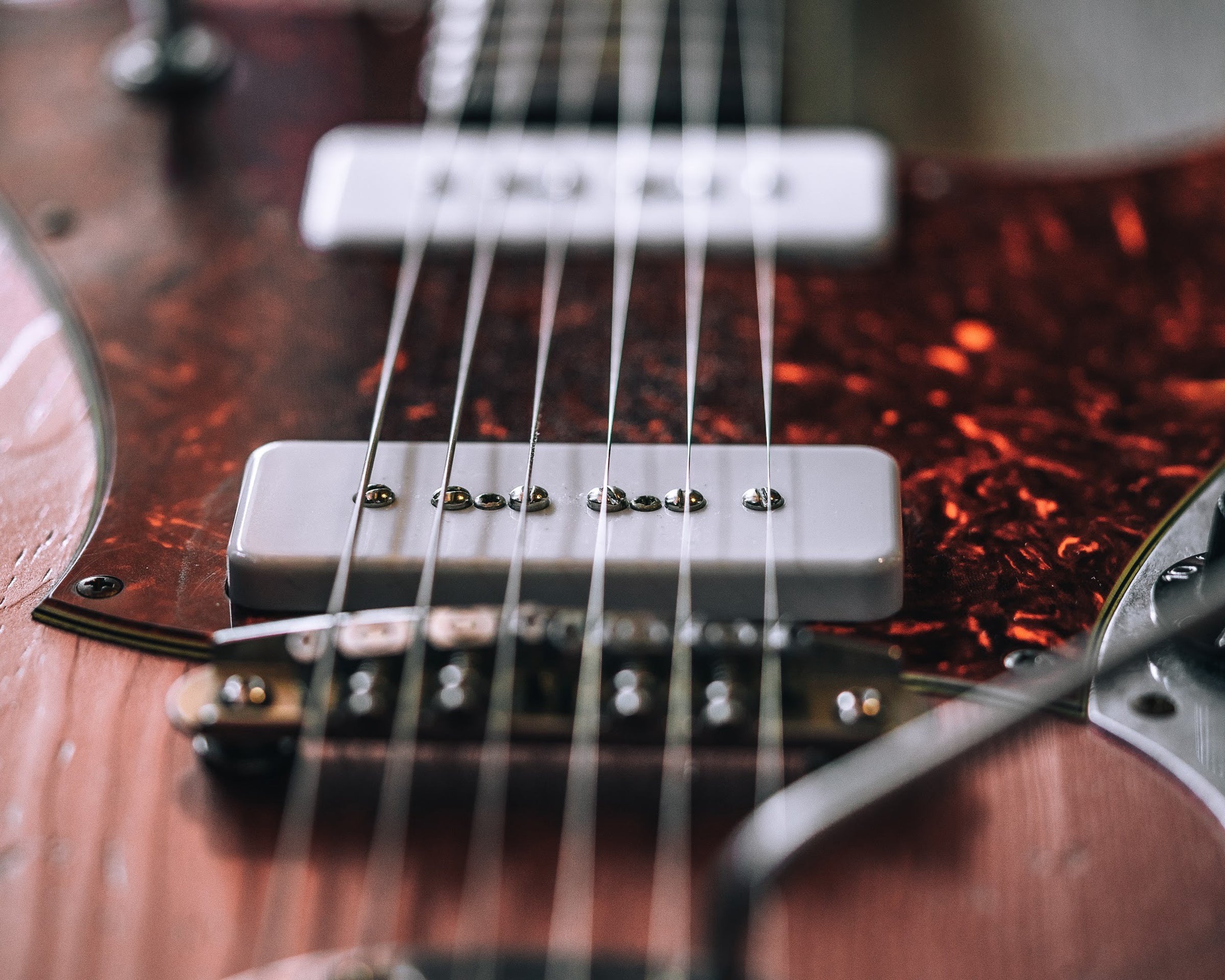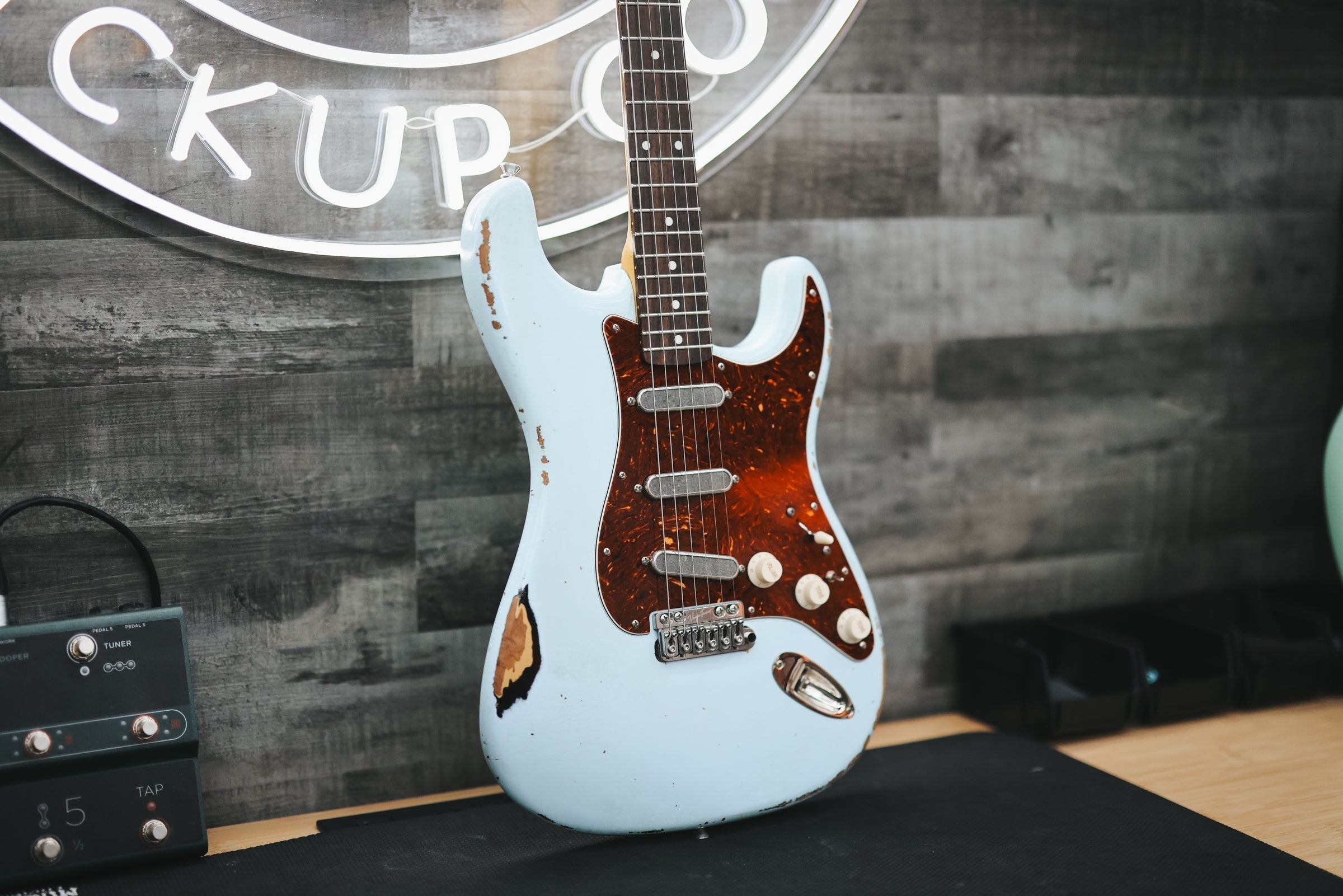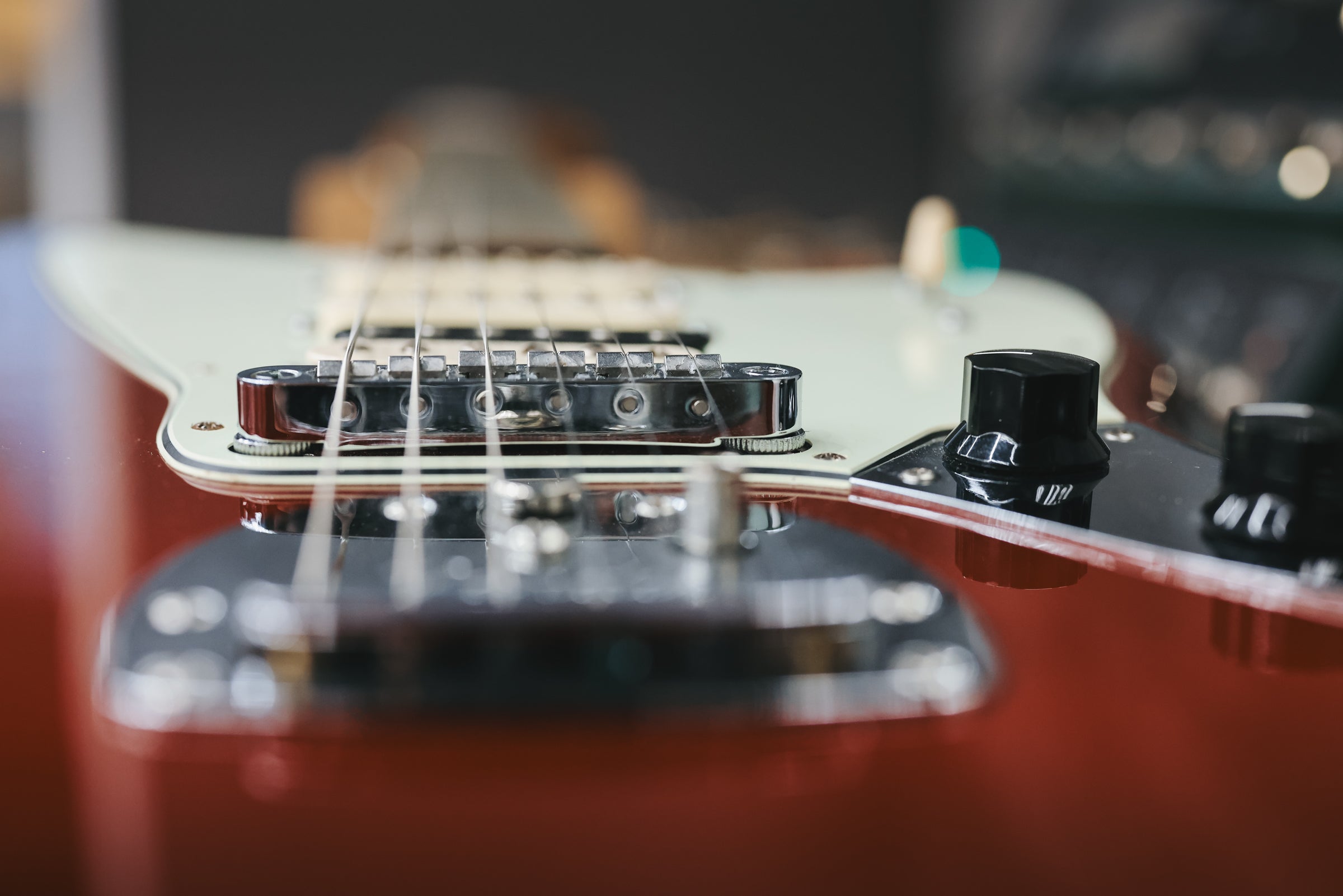
What Are Guitar Strings Made Of
We guitarists just want to play! We grab the closest body with strings and start plinking away, but sometimes knowing your guitar parts can really elevate your experience. One of the most important pieces? Your strings. The right set of strings can totally change how your guitar feels and sounds. Different types of guitars call for different types of strings. And using the wrong kind can mess with your tone and comfort. So today, let’s take a look at what guitar strings are made of, and how that knowledge can help you become a better player.

What Are Guitar Strings Made Of
Understanding guitar string materials isn’t just about trivia. It helps you make smarter choices for tone, playability, and durability. Once you know the makeup of your strings, you'll get why they sound bright, warm, mellow, or crisp. Whether you're buying your first set of strings or you bought strings and something feels off, knowing what they’re made of gives you most context and control over your tone.
Strings are a major part of the sound chain. Materials affect resonance, attack, and sustain. Whether you’re playing fingerstyle or strumming hard with a pick, the strings respond in different ways based on their construction. A beginner might not think twice about grabbing a random set off the shelf, but once you’ve tried a few types, the difference can become quite obvious. The more familiar you are with guitar string materials, the easier it is to make informed choices.
What Are The Components Of A Guitar String
Steel Core
Most modern strings, especially for electric and acoustic guitars, have a steel core. This core gives the string strength and tuning stability. Steel guitar strings rely on this core to hold tension and transfer vibration. Cores are usually either round or hex-shaped. Hex cores tend to have a brighter sound and more tension, while round cores offer a slightly softer feel and warmer tone.
Winding
Wound strings wrap a metal wire around that steel core. The type of winding affects tone and feel. Nickel plated steel is super common for electric guitar strings. It offers a balanced tone that isn’t too bright or too dull. Stainless steel windings give you a brighter sound and resist corrosion, but they might feel a bit rougher on your fingers.
For acoustic guitar strings, the winding is often 80/20 bronze (80 copper and 20 zinc) or phosphor bronze. 80/20 bronze gives you a bright, clear tone, while phosphor bronze has a warmer, more balanced sound. Both are popular choices, and it comes down to your preference. Bronze tends to oxidize faster, so players often swap them more frequently unless they use coated strings.
Coated Strings
Coated strings are wrapped in a thin layer of polymer that helps them last longer. They might feel a bit smoother and slightly less bright, but they stay fresh longer, which makes them a great choice for players who don’t like changing strings often. The coating repels dirt, oil, and sweat, which means you get more mileage out of a single set of strings. Many coated options are available across brands for both steel string and bass strings.
Most string sets include both plain and wound strings. Typically, your higher strings (or treble strings) are plain steel, while the lower ones have winding. This combo keeps the highs easy to bend and the lows full and warm. If you've ever wondered why the feel of the strings changes (typically) when switching from the D string to the G string, this is why. On classical guitars, the plain treble strings are nylon guitar strings and the lower three bass strings are wound over a nylon core.

What Are The Strings On A Guitar Made Of
Acoustic guitar strings are mostly steel string sets with either 80/20 bronze or phosphor bronze windings. These strings are built to resonate through the guitar’s wooden body. They usually feature a steel core and metal windings for projection and clarity. Some sets come as coated strings to improve longevity.
The 80/20 bronze option, made from 80 copper and 20 zinc, gives a bright, sparkling tone. This is a great choice if you want a string that cuts through in a live setting. Phosphor bronze, on the other hand, adds warmth and depth. It tends to retain its tone longer and is a favorite for fingerstyle players.

What Are Electric Guitar Strings Made Of
Electric guitar strings also use a steel core, but their winding is designed to work with magnetic pickups. Nickel plated steel is the most common because it gives a balanced tone. For a brighter, more cutting tone, players might choose stainless steel. Some vintage-style sets use pure nickel for a warmer sound. You can also find coated strings for electric guitars that extend life without dulling the tone too much.
Electric strings are usually lighter than acoustic strings, which makes them easier to bend and faster under the fingers. Because tone is transferred magnetically, the metal content matters. Bronze strings, which are great for acoustics, won’t work well with magnetic pickups, so sticking with nickel plated steel or stainless steel is a must.
What Are Bass Guitar Strings Made Of
Bass strings are thicker and built to handle lower frequencies. Like electric strings, they use nickel plated steel or stainless steel windings around a steel core. Some players like the crisp attack of stainless, while others prefer the smoother tone of nickel. You can even get flatwound bass strings for an old-school feel and sound.
Bass strings can also be roundwound or flatwound. Roundwound strings are brighter and more textured, while flatwounds are smoother and offer a mellower tone with less finger noise. Many players experiment with both to find what suits their style.
What Are Classical Guitar Strings Made Of
Classical guitar strings are a different story. Instead of metal, they use nylon guitar string for the treble strings. The bass strings have a multifilament nylon core wrapped with metal, often silver plated copper. Historically, animal intestines were used, but thankfully we've moved on to more stable and ethical materials.
Modern classical guitar strings provide great tone and stability while being softer on the fingers. You can also find sets with variations in tension (normal, high, extra-high) to fine-tune your feel and response. The silver plated bass strings offer clarity and warmth and pair well with the soft nylon treble side.

At the end of the day, choosing the right set of strings involves more than just picking a gauge. You want to match your strings to your guitar type, playing style, and tonal goals. Whether it’s the bright snap of nickel plated steel, the warmth of phosphor bronze, or the mellow feel of nylon guitar strings, now you know what makes your strings tick.
And when you're ready to freshen up your sound, here's a guide on how to replace guitar strings.



Leave a comment
This site is protected by hCaptcha and the hCaptcha Privacy Policy and Terms of Service apply.